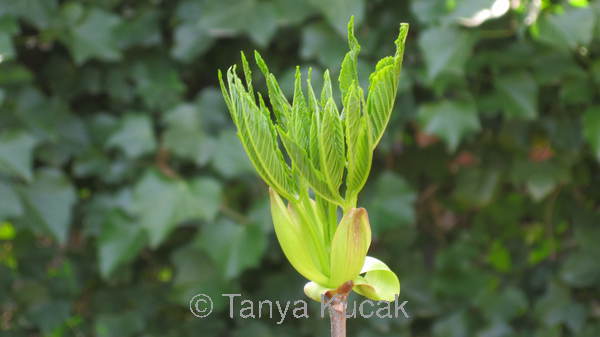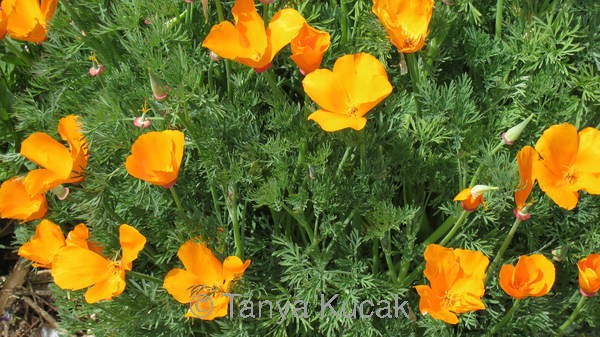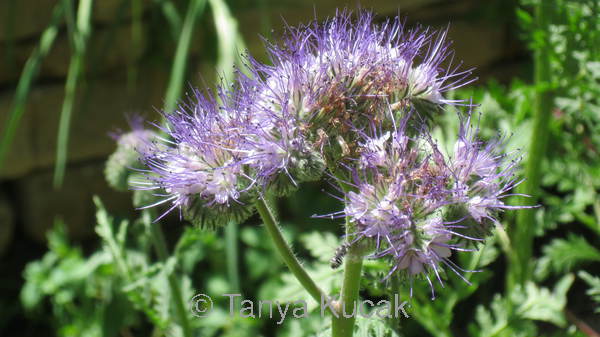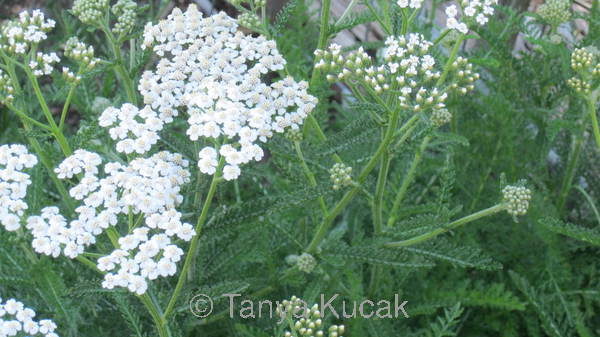
You may see birds and insects on nonnative plants, but you won't be sure they're really getting what they need unless they are feeding on native plants, according to Judith Larner Lowry. She talked about designing backyard restoration gardens at a local symposium last year.
Restoration garden design focuses on the plants rather than the hardscape, so before planting a new garden, make sure you've figured out the basics: placing paths, brainstorming use areas, and defining utility areas. It's worth spending an extra year to address weed problems and resolve drainage issues. This is also the time to explore graywater reuse or how to keep rainwater on site.
It's a good idea to keep notes on plants you like as you visit nurseries, attend garden tours, or stroll through the native section of a botanic garden. But be prepared to let go of southern California endemics in favor of local natives.
Lowry described eight design guidelines for restoration gardens.
First, use local plant associations to create your plant list. Look for nearby areas where native plants grow naturally, such as Rancho San Antonio Open Space Preserve, Hidden Villa trails, or Edgewood Park & Natural Preserve. Though Edgewood is in Redwood City, it's an easy place to learn plant names because you can attend a docent-led tour or pick up information in the education center.
For a small backyard, one or two plant communities might be appropriate. You can use oak woodland plants for open areas in part shade and part sun, and riparian plants for deeper shade. Chaparral plants will thrive on a dry sunny hillside.
Second, if any native plants are already growing in your yard, use them. This is a consideration if you live close to undeveloped areas or open space, not so much if you're in the middle of suburbia.
Third, choose a keynote plant to use throughout your garden. Rather than planting a one-of-each garden, use the design principle of repetition to make your design more harmonious. Lowry uses coyote brush as a keynote plant in her coastal garden.
Fourth, work with the seasons. In our mediterranean climate, the rainy season is a good time to plant. Many plants show new growth and new green in winter, followed by flowering in the spring. In summer drought-adapted plants wind down, then go into dormancy in fall.
Fifth, let plants dictate. Don't get attached to your idea of how a certain plant should look or behave. Let the plant show you where it wants to be.
Sixth, build a connection to earlier inhabitants of the land through plants. Once upon a time, native plants were used for all the necessities of daily life. Learn about the uses of your plants by reading books such as Tending the Wild, visiting the Tuibun Ohlone Village site across the bay at Coyote Hills Regional Park, or researching ethnobotany online.
Seventh, plan for changes with time. A garden is not a static entity. Some plants fill out in a couple seasons, while others spend a few years growing roots before spurting up. Happy plants can spread, which is good if you like them but not if they're bullying other favored plants.
Eighth, be open to surprises. This is the most important guideline, Lowry said.

The slowly unfolding new leaves of buckeye trees herald the end of winter.

Although California poppy reseeds prolifically and can easily take over most of my garden, I welcome a small patch of it in the spring. It's fun to watch bumblebees inside the flowers.

Phacelia attracts many beneficial insects with its tiny flowers. A field of phacelia is always alive with bees.

In my small garden, yarrow is the keynote plant. Its fresh ferny foliage looks good year-round, and the bright white flowers bloom for months and attract beneficial insects.
© 2012 Tanya Kucak